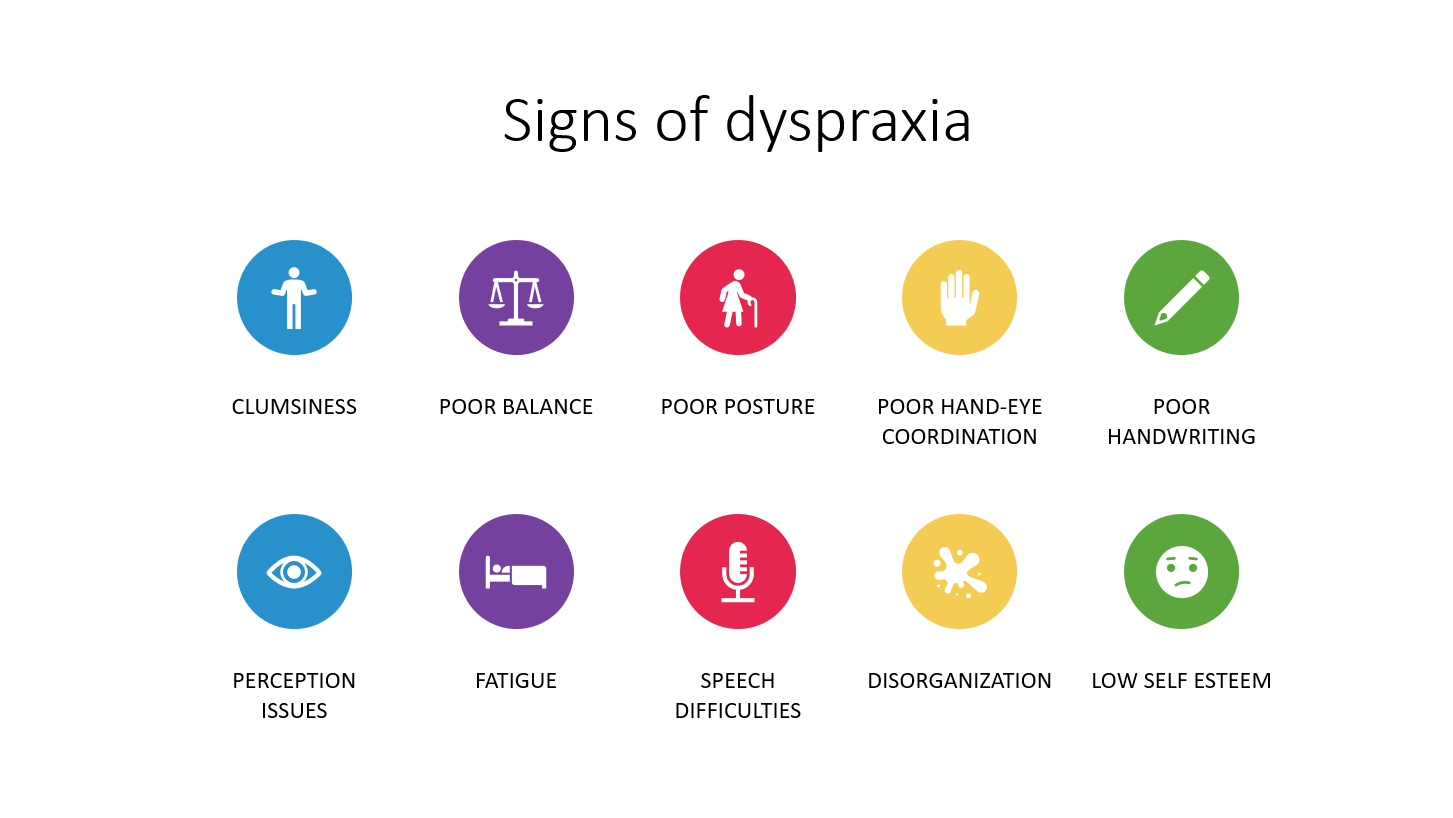- April 10, 2024
What is dyspraxia?

Dyspraxia, also known as developmental coordination disorder (DCD), is a chronic condition that begins in childhood that causes difficulties with motor (movement) skills and coordination.
Dyspraxia can cause a wide range of issues with movement and coordination. Some of these may be noticeable at an early age, while others may only become obvious as your child gets older. Dyspraxia can affect your child’s coordination skills, which can make riding a bicycle or playing sports difficult. It can also affect their fine motor skills, such as writing or fastening buttons.
Dyspraxia in adults
When it’s not used in the context of childhood developmental coordination disorder, the term “dyspraxia” has a broader meaning.
Healthcare providers may also use the term “dyspraxia” to describe movement difficulties that happen later in life because of damage to your brain, such as from a stroke or brain injury. Providers may refer to this as acquired dyspraxia.
What is the difference between dyspraxia and apraxia?
Healthcare providers sometimes use the terms “apraxia” and “dyspraxia” interchangeably. However, apraxia is often more severe than dyspraxia. Apraxia means that you completely lose the ability to do something even though you understand the command and have a willingness to perform the movement. Dyspraxia means that you partially lose the ability to do something with accuracy.
Apraxia also has several different subtypes, including childhood apraxia of speech, limb-kinetic apraxia (the inability to make precise movements with your finger, arm or leg) and constructional apraxia (the inability to draw or copy simple diagrams or to construct simple figures).
Who does dyspraxia affect?
The first signs of dyspraxia (developmental coordination disorder) begin in childhood during the developmental period. As it’s a chronic condition, dyspraxia can persist into adulthood as well.
Dyspraxia more commonly affects men and people assigned male at birth than women and people assigned female at birth.
Your child may be more likely to have dyspraxia if:
- They were born prematurely before the 37th week of pregnancy, especially if they were born before the 32nd week of pregnancy.
- They were born with a very low birth weight (less than 4 pounds).
- They have a family history of developmental coordination disorder.
How common is dyspraxia?
Dyspraxia (developmental coordination disorder) is relatively common. It affects approximately 6% of school-aged children.
Signs of dyspraxia in babies and toddlers
Delays in reaching expected developmental milestones can be an early sign of dyspraxia in babies and toddlers. For example, your child may take longer than expected to roll over, sit, crawl, or walk.
You may also notice that your child:
- Has difficulty playing with toys that involve good coordination, such as stacking cups.
- Has some difficulty learning to eat with spoons and forks.
Signs of dyspraxia in older children
- Difficulty with walking up and down stairs.
- Difficulty with balance — they may bump into objects, fall frequently or seem clumsy.
- Difficulty with sports and activities, such as riding a bike, jumping, catching, throwing, or kicking a ball. They may avoid participating in activities because of their lack of coordination.
- Difficulty with writing, drawing/coloring, and using scissors compared to other children their age.
- Difficulty getting dressed, fastening buttons, brushing their teeth, and tying shoelaces.
- Restlessness — they may swing or move their arms and legs frequently.
Your child may become frustrated when trying to perform these tasks.
Children with dyspraxia are also more likely to develop overweight or obesity since they may be reluctant to exercise due to difficulties and frustration with coordination.
How is dyspraxia diagnosed?
Although signs of dyspraxia (developmental coordination disorder) are present from an early age, they can be easy to miss, as children vary widely in their rate of development. Because of this, a definite diagnosis of DCD doesn’t usually happen until a child is 5 years old or older.
There are no medical tests that can definitively diagnose dyspraxia. Instead, your child’s team of healthcare providers will ask detailed questions about your child’s medical history, development, and symptoms. They’ll assess your child’s gross and fine motor skills, coordination, and balance. They’ll also assess your child’s mental ability to see if it’s within the expected range for their age.
For a child to be diagnosed with dyspraxia (developmental coordination disorder), they typically need to meet all of the following criteria:
- Their motor skills are significantly below the level expected.
- Their lack of motor skills and coordination affects their daily activities and achievements at school.
- Symptoms of dyspraxia first developed during an early stage of their development.
- Their difficulty with motor skills isn’t better explained by other medical conditions.
How is dyspraxia managed and treated?
There’s no cure for dyspraxia (developmental coordination disorder), but different types of therapies, such as occupational therapy and physical therapy, can help children and adults with dyspraxia improve their motor skills and coordination.
As dyspraxia affects everyone differently, your child will benefit most from an individualized treatment plan to manage their physical difficulties and improve their confidence.
Your child may need support to help them learn ways to overcome difficulties with motor skills and coordination throughout their life. If you notice that your child is having difficulties with a new movement task, such as writing or learning to drive a car, talk to their healthcare provider and/or occupational therapist.

